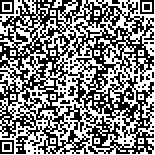| 引用本文: | 胡义,王著显,朱钊铭,吴煜凡,薛雅琪,王媛,曾泉富,陈鸿楷,郭颖琳,梁佩仪,朱红霞,刘莉,沈群,江翠平,申春燕,刘强.基于网络药理学、定量构效关系、分子对接探讨甘草黄酮抗痤疮的分子机制[J].中国现代应用药学,2022,39(8):1039-1047. |
| HU Yi,WANG Zhuxian,ZHU Zhaoming,WU Yufan,XUE Yaqi,WANG Yuan,ZENG Quanfu,CHEN Hongkai,GUO Yinglin,LIANG Peiyi,ZHU Hongxia,LIU Li,SHEN Qun,JIANG Cuiping,SHEN Chunyan,LIU Qiang.Molecular Mechanism of Licorice Flavonoids Anti-acne Based on Network Pharmacology, Quantitative Structure Activity Relationship, and Molecular Docking[J].Chin J Mod Appl Pharm(中国现代应用药学),2022,39(8):1039-1047. |
|
| |
|
|
| 本文已被:浏览 1952次 下载 841次 |

码上扫一扫! |
|
|
| 基于网络药理学、定量构效关系、分子对接探讨甘草黄酮抗痤疮的分子机制 |
|
胡义1, 王著显1, 朱钊铭1, 吴煜凡1, 薛雅琪1, 王媛1, 曾泉富1, 陈鸿楷1, 郭颖琳1, 梁佩仪1, 朱红霞2, 刘莉1, 沈群1, 江翠平1, 申春燕1, 刘强1
|
|
1.南方医科大学中医药学院, 广州 510515;2.南方医科大学中西医结合医院, 广州 510315
|
|
| 摘要: |
| 目的 基于网络药理学、定量构效关系、分子对接探讨甘草黄酮抗痤疮可能的分子机制,为该成分透皮制剂的开发提供依据。方法 通过网络药理学筛选出甘草黄酮抗痤疮的关键活性成分与靶点,然后通过HipHop方法构建了甘草黄酮化合物活性的最佳QSAR药效团模型,并推测出该药效团可能起决定性治疗作用的药效基团,最后通过分子对接对该药效基团进行验证。结果 网络药理学研究表明7-羟基黄酮、甘草内酯、9S,13R-12-oxophytodienoic acid、柚皮素、4’-甲氧基黄酮等化合物是甘草黄酮中抗痤疮的关键活性成分,CYP19A1、ALOX5和ESR1是其抗痤疮的关键靶点。QSAR药效团模型研究表明,甘草黄酮的最优药效团由1个疏水基团,2个氢键受体基团组成。分子对接研究表明,通过网络药理学筛选的活性化合物和靶蛋白具有较好的亲和力,同时也发现通过QSAR构建的最优药效团模型可能是甘草黄酮抗痤疮中起决定性治疗作用的药效基团。结论 本研究成功建立了甘草黄酮的结构特性与其抗痤疮活性之间的构效关系,为中药透皮制剂的开发和临床应用提供了理论指导。 |
| 关键词: 甘草黄酮 网络药理学 定量构效关系 分子对接 |
| DOI:10.13748/j.cnki.issn1007-7693.2022.08.006 |
| 分类号:R966 |
| 基金项目:国家自然科学基金面上项目(81874346,82074023);广东省科技厅重大科技专项(2017B090912005) |
|
| Molecular Mechanism of Licorice Flavonoids Anti-acne Based on Network Pharmacology, Quantitative Structure Activity Relationship, and Molecular Docking |
|
HU Yi1, WANG Zhuxian1, ZHU Zhaoming1, WU Yufan1, XUE Yaqi1, WANG Yuan1, ZENG Quanfu1, CHEN Hongkai1, GUO Yinglin1, LIANG Peiyi1, ZHU Hongxia2, LIU Li1, SHEN Qun1, JIANG Cuiping1, SHEN Chunyan1, LIU Qiang1
|
|
1.School of Traditional Chinese Medicine, Southern Medical University, Guangzhou 510515, China;2.Hospital of Integrated Traditional Chinese Medicine, Southern Medical University, Guangzhou 510315, China
|
| Abstract: |
| OBJECTIVE To explore the possible molecular mechanism of licorice flavonoids anti-acne based on network pharmacology, QSAR and molecular docking, and to provide reference for the preparation of its transdermal preparations. METHODS Firstly, the key active ingredients and targets of licorice flavonoids anti-acne through network pharmacology were screened out. Then, the optimal QSAR pharmacophore model for the activity of licorice flavonoids was constructed by the HipHop method, and the pharmacophore that might play a decisive therapeutic role was deduced. Finally, the pharmacophore was verified by molecular docking. RESULTS Network pharmacology studies showed that 7-hydroxyflavone, glabrolide, 9S,13R-12- oxophytodienoic acid, naringenin and 4'-methoxyflavone were key anti-acne active components in licorice flavonoids, and CYP19A1, ALOX5 and ESR1 are key anti-acne targets. The QSAR pharmacophore model studies showed that the optimal pharmacophore of licorice flavonoids consists of one hydrophobic group and two hydrogen bond acceptor groups. The molecular docking study showed that the active compounds screened by network pharmacology had a good affinity with the target protein, and the optimal pharmacophore model constructed by QSAR might be the decisive therapeutic pharmacophore of licorice flavonoids in anti-acne. CONCLUSION This study successfully established the structure-activity relationship between the structural properties and anti-acne activity of licorice flavonoids, which provides theoretical guidance for the development and clinical application of traditional Chinese medicine transdermal preparations. |
| Key words: licorice flavonoids network pharmacology quantitative structure activity relationship(QSAR) molecular docking |
|
|
|
|
